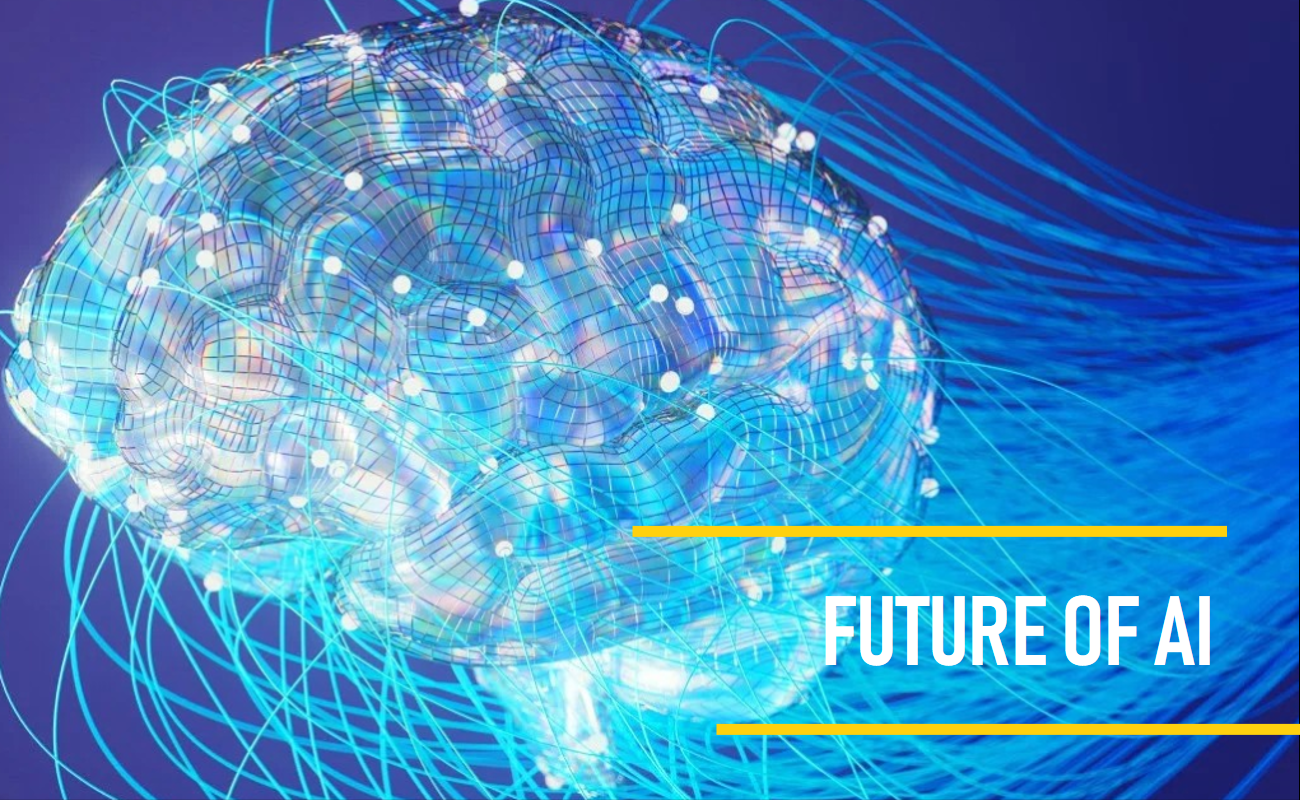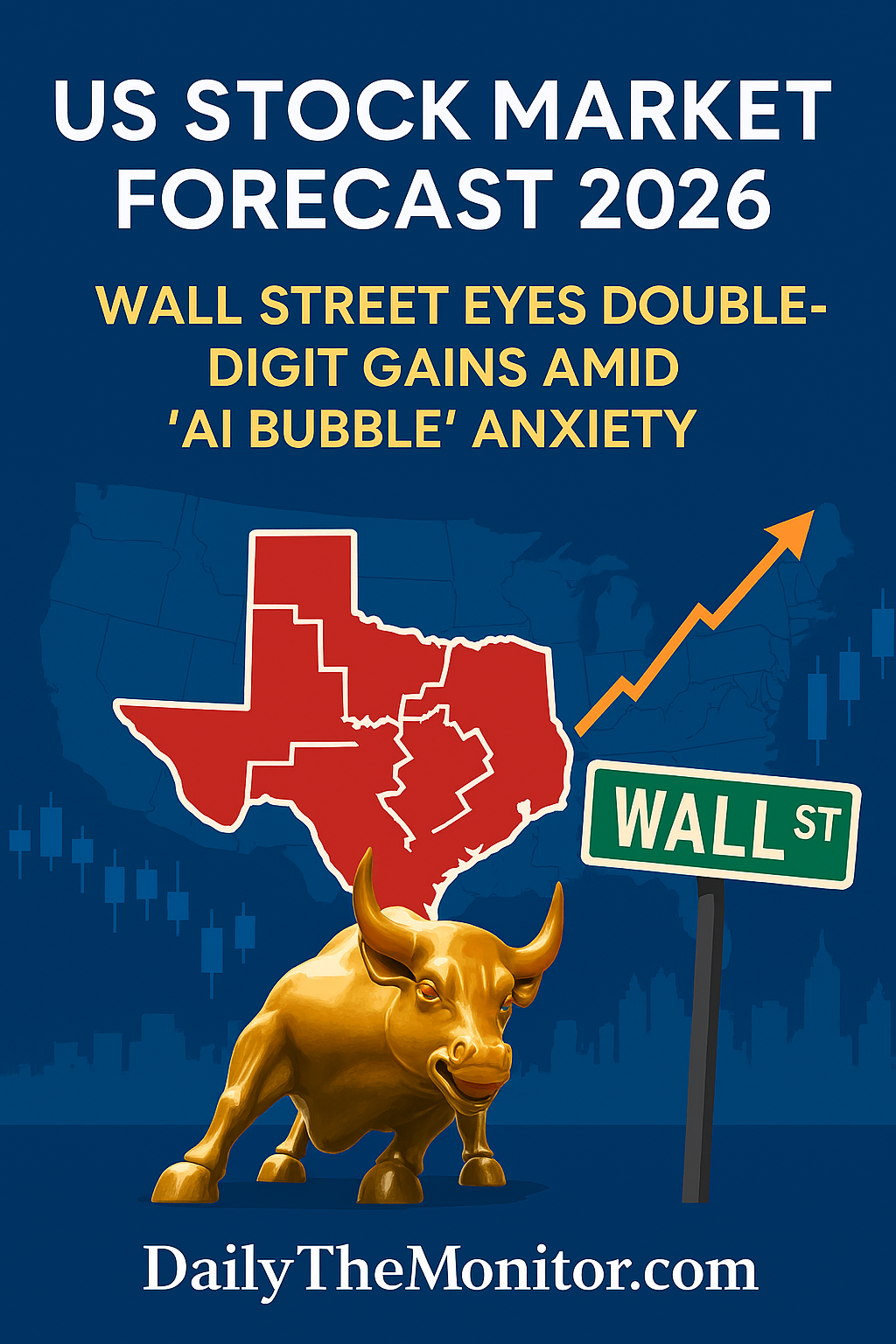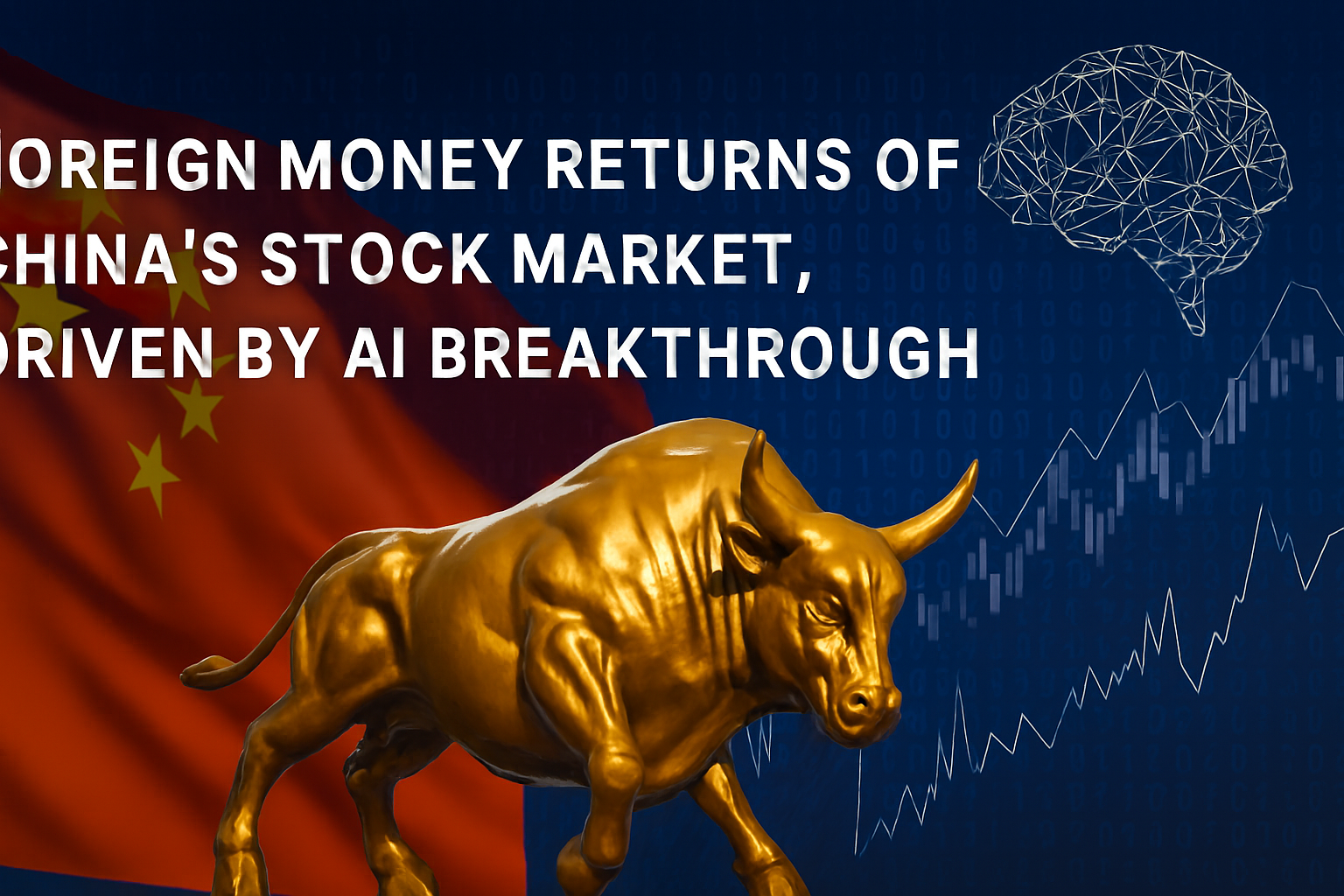AI
World at a Crossroads: Extinction or a New AI-Enabled Civilization?

1: The Precarious State of Our World
In a world grappling with the dual challenges of relentless warfare and the impending threat of climate change, humanity finds itself standing at a crossroads. As nations engage in power struggles and our planet faces environmental peril, the search for solutions has led some to explore unconventional avenues. One such avenue gaining increasing attention is the role of artificial intelligence (AI) in steering our collective destiny.
2: War and Climate Change: The Twin Perils
War: A Never-Ending Struggle
As conflicts persist across the globe, the human toll continues to rise. The sheer scale of destruction witnessed in recent conflicts underscores the urgent need for innovative approaches to peacekeeping and conflict resolution.
According to the Stockholm International Peace Research Institute (SIPRI), global military spending reached a staggering $1.83 trillion in 2023, the highest level since the end of the Cold War. This financial commitment to warfare comes at the expense of investments in critical areas such as healthcare, education, and sustainable development.

Climate Change: A Looming Catastrophe
On the other front, climate change poses an existential threat to our planet. The latest report from the Intergovernmental Panel on Climate Change (IPCC) warns of irreversible damage if immediate and drastic measures are not taken. Rising temperatures, extreme weather events, and loss of biodiversity are already taking a toll on ecosystems and vulnerable communities.
3: The AI Solution: A Beacon of Hope?
AI’s Potential to Exceed Human Intelligence
Amid these challenges, there is a growing chorus advocating for the integration of artificial intelligence into our decision-making processes. Proponents argue that machines with the ability to surpass human intelligence could offer innovative solutions to complex global issues.
Leading AI researcher, Dr. Angela Chen, points out, “AI has the potential to process vast amounts of data, identify patterns, and make predictions at speeds and scales beyond human capability. This could be instrumental in addressing the root causes of conflicts and formulating effective climate change mitigation strategies.”
4: The Dark Side of AI Advancement
Ethical Concerns and Unintended Consequences
While the promise of AI is compelling, it is not without its ethical dilemmas and potential pitfalls. The development of superintelligent machines raises concerns about accountability, control, and unintended consequences.
Renowned ethicist, Professor Maya Rodriguez, warns, “Handing over significant decision-making power to AI systems requires careful consideration. What if these systems, in their pursuit of efficiency, prioritize outcomes that are detrimental to human values or lead to unforeseen negative consequences?”
5: Striking a Delicate Balance
A Call for Ethical AI Development
In the quest for a future where AI plays a constructive role, experts emphasize the importance of responsible and ethical development. This includes transparent decision-making algorithms, robust accountability mechanisms, and international cooperation to prevent the weaponization of AI technology.
The Partnership on AI, a consortium of major tech companies and research institutions, aims to establish guidelines for the ethical use of AI. Their commitment to fostering collaboration and sharing best practices reflects a collective recognition of the need for responsible AI deployment.
6: The Role of AI in Conflict Resolution
AI as a Mediator and Peacekeeper
One potential application of AI in addressing global conflicts is its role as a neutral mediator. By processing historical data, identifying underlying causes, and proposing unbiased solutions, AI systems could contribute to more effective and impartial conflict resolution.
Moreover, AI-driven simulations and predictive models could assist in anticipating potential conflicts, allowing for proactive measures to prevent escalation. These tools could become invaluable assets in the pursuit of lasting peace.
7: AI’s Environmental Stewardship
Mitigating Climate Change Through Innovation
On the environmental front, AI presents itself as a tool for mitigating the impact of climate change. Advanced algorithms can analyze climate data to enhance our understanding of complex environmental systems. This knowledge, in turn, enables more precise and effective strategies for conservation and sustainable resource management.
In the energy sector, AI-powered technologies are revolutionizing renewable energy production and consumption. From optimizing solar panel efficiency to managing smart grids, AI’s potential to revolutionize our approach to clean energy is vast.
8: The Human-AI Partnership
Collaboration for a Better Future
Rather than viewing AI as a replacement for human decision-making, proponents argue for a collaborative approach. By combining human intuition, creativity, and emotional intelligence with AI’s analytical prowess, we may unlock unprecedented solutions to the challenges that threaten our existence.
The World Economic Forum’s Global AI Council promotes the idea of a human-AI partnership, emphasizing the importance of inclusive governance and diverse perspectives in shaping the trajectory of AI development. This collaborative model aims to ensure that the benefits of AI are shared equitably across societies.
9: Navigating the Path Forward
Charting a Course for the Future
As we stand at this pivotal moment in history, the path forward is fraught with uncertainties. The convergence of war, climate change, and the potential of AI demands a careful and thoughtful approach.
International cooperation, ethical AI development, and a commitment to sustainable practices are crucial components of a roadmap that can lead us away from the brink of extinction and towards a new era of AI-enabled civilization. The choices we make today will shape the destiny of generations to come, and it is incumbent upon us to choose wisely.
In the face of adversity, the prospect of a future where AI and humanity collaborate to overcome our greatest challenges is both daunting and inspiring. The world may indeed be at a crossroads, but with informed decisions and responsible stewardship, we have the power to forge a path towards a brighter and more sustainable future.
Discover more from The Monitor
Subscribe to get the latest posts sent to your email.
AI
US Stock Market Forecast 2026: Wall Street Eyes Double-Digit Gains Amid ‘AI Bubble’ Anxiety

Table of Contents
Executive Summary: Key Takeaways
- Bullish Consensus: Major banks including Morgan Stanley, Deutsche Bank, and JPMorgan project the S&P 500 could breach 8,000 by 2026, implying double-digit upside.
- The “Capex” Conundrum: Big Tech is on track to spend over $400 billion on AI infrastructure, sparking fears of a 2000-style dot-com crash if ROI lags.
- Sector Rotation: Smart money is looking beyond the “Magnificent Seven” to utilities, industrials, and defense stocks that power the physical AI build-out.
- Fed Pivot: Falling interest rates in 2026 are expected to provide a critical tailwind for valuations, potentially offsetting slowing AI growth rates.
The Lead: A Market Divided
Wall Street has drawn a line in the sand for 2026, and the numbers are aggressively bullish. Despite a creeping sense of vertigo among retail investors and murmurs of an “AI bubble” in institutional circles, the heavyweights of global finance are betting on a roaring continuation of the bull market.
The central conflict defining the 2026 US Stock Market Forecast is a high-stakes tug-of-war: On one side, massive liquidity injections and corporate tax tailwinds are driving S&P 500 projections to record highs. On the other, the sheer scale of Tech sector CapEx—spending money that hasn’t yet returned a profit—is creating a fragility not seen since the late 1990s.
The Bull Case: Why Banks Are Betting on 8,000
The bullish thesis isn’t just about blind optimism; it is grounded in liquidity and earnings broadening.
Morgan Stanley has set a towering target of 7,800, citing a “market-friendly policy mix” and the potential for corporate tax reductions to hit the bottom line. Their analysts argue that we are entering a phase of “positive operating leverage,” where companies trim fat and boost margins even if top-line revenue slows.
Deutsche Bank is even more aggressive, eyeing 8,000 by year-end 2026. Their rationale hinges on a successful “soft landing” orchestrated by the Federal Reserve. As rates stabilize and eventually fall, the cost of capital decreases, fueling P/E expansion not just in tech, but across the S&P 493 (the rest of the index).
JPMorgan offers a nuanced “Base Case” of 7,500, but their “Bull Case” aligns with the 8,000 predictions. Their strategists highlight that earnings growth is projected to hit 13-15% over the next two years. Crucially, they believe this growth is broadening. It is no longer just about Nvidia selling chips; it is about banks, healthcare firms, and retailers deploying those chips to cut costs.
The Bear Counter-Argument: The $400 Billion Question
While the targets are high, the floor is shaky. The “Elephant in the Room” is the unprecedented rate of spending on Artificial Intelligence without commensurate revenue.
Collectively, hyperscalers (Microsoft, Google, Amazon, Meta) are pacing toward $400 billion in annual capital expenditures. This “Capex Supercycle” has investors jittery. Recent reports of slowing growth in Microsoft’s Azure AI division—missing analyst estimates—have acted as a tremor, hinting that the seemingly infinite demand for AI might have a ceiling.
The fear mirrors the Dot-com Bubble. In 2000, companies overbuilt fiber-optic networks anticipating traffic that didn’t arrive for years. Today, the risk is that companies are overbuilding data centers for AI models that businesses aren’t yet ready to monetize. If Big Tech margins compress due to this spending, the S&P 500—weighted heavily in these names—could face a correction of 10-20%, a risk explicitly acknowledged by executives at Goldman Sachs.
Sector Watch: Where the Real Value Hides
If the tech trade is crowded, where is the “smart money” moving for 2026?
- Utilities & Energy: AI models are thirsty. They require massive amounts of electricity. Utilities are no longer just defensive dividend plays; they are growth engines essential for the AI grid.
- Industrials: The physical build-out of data centers requires HVAC systems, steel, and logistics. This “pick and shovel” approach offers exposure to the AI theme without the valuation premium of a software stock.
- Defense & Aerospace: With geopolitical fragmentation continuing, defense spending is becoming a structural growth story, detached from the vagaries of the consumer economy.
Wall Street Consensus: 2025 vs. 2026 Targets
The table below illustrates the widening gap between current trading levels and the street’s 2026 optimism.
| Bank / Firm | 2025 Year-End Outlook | 2026 Price Target | Primary Catalyst |
| Deutsche Bank | ~7,000 | 8,000 | Robust earnings growth & AI adoption |
| Morgan Stanley | ~6,800 | 7,800 | Tax cuts & Fed easing |
| Wells Fargo | ~6,900 | 7,800 | Inflation stabilization |
| JPMorgan | ~6,700 | 7,500 – 8,000 | Broadening earnings (Base vs Bull case) |
| HSBC | ~6,700 | 7,500 | Two-speed economic growth |
Conclusion: Navigating the “Wall of Worry”
The consensus for 2026 is clear: the path of least resistance is up, but the ride will be volatile. The projected double-digit gains are contingent on two factors: the Federal Reserve cutting rates without reigniting inflation, and Big Tech proving that their billions in AI spending can generate real cash flow.
For the savvy investor, 2026 is not the year to chase an index fund blindly. It is the year to look for cyclical rotation—investing in the companies that build the grid, finance the expansion, and secure the borders, while keeping a watchful eye on the valuations of the Magnificent Seven.
Discover more from The Monitor
Subscribe to get the latest posts sent to your email.
AI
The Return of the Dragon’s Allure

For much of the past four years, China’s equity markets have been a graveyard of foreign enthusiasm. International investors, once captivated by the promise of the world’s second-largest economy, retreated amid a property crisis, regulatory crackdowns, and geopolitical tensions. The narrative was one of caution, even resignation: China, many argued, had lost its luster. Yet markets are creatures of sentiment, and sentiment can pivot with startling speed. The recent surge of foreign inflows — the largest since 2021 — marks a turning point. The catalyst is not a stimulus package or a central bank maneuver, but a technological breakthrough that has jolted investors awake.
Table of Contents
A Market Long in the Shadows
China’s stock market has endured a bruising half-decade. The collapse of property developers, most notably Evergrande, cast a long shadow over the economy. Regulatory interventions in tech — from e-commerce giants to private tutoring firms — rattled confidence. Foreign ownership of Chinese equities fell to multi-year lows, with MSCI China underperforming global peers by double digits. The Shanghai Composite stagnated, while capital fled to safer havens in the U.S. and Europe. For many, China became synonymous with risk rather than opportunity.
DeepSeek AI: A Shock to the System
Enter DeepSeek, a little-known Chinese AI lab that stunned the world with a breakthrough in generative intelligence. Its model, hailed as a leap beyond existing architectures, demonstrated capabilities that rivaled — and in some cases surpassed — Western counterparts. The symbolism was profound: Beijing was no longer playing catch-up in the AI race. Investors, fatigued by narratives of Chinese decline, suddenly saw evidence of innovation at scale. DeepSeek became shorthand for a broader truth — that China’s technological ecosystem remains formidable, underestimated, and capable of reshaping global competition.
The breakthrough did more than impress engineers. It shifted investor psychology. AI is the defining growth story of this decade, and China now has a flagship to rival Silicon Valley. For foreign funds, the logic was simple: ignore China at your peril.
The Surge of Capital
The numbers tell the story. In October and November 2025, foreign investors poured over $25 billion into Chinese equities, the largest two-month inflow since 2021. The CSI 300 index rallied nearly 12% in the same period, while the MSCI China index outperformed emerging market peers for the first time in years. Tech and semiconductor stocks led the charge, with AI-linked firms posting double-digit gains. Even beleaguered consumer discretionary names saw renewed interest, buoyed by expectations that AI-driven productivity could lift broader growth.
The inflows were not indiscriminate. Capital targeted sectors aligned with innovation: cloud computing, chip design, robotics, and biotech. Foreign ownership of Chinese technology firms rose from 3.8% to 5.1% in just weeks, reversing years of decline. Hedge funds, sovereign wealth funds, and pension managers — long absent — returned with conviction.
Policy Signals and the State’s Hand
The surge was amplified by policy signals from Beijing. Regulators, chastened by the backlash to earlier crackdowns, have softened their tone. The government has rolled out tax incentives for AI firms, streamlined approval processes for foreign investors, and emphasized “predictability” in regulatory frameworks. The People’s Bank of China has kept liquidity ample, while fiscal authorities have hinted at targeted support for innovation hubs.
Macroeconomic indicators, though mixed, have offered reassurance. Industrial output rose 5.2% year-on-year in Q3, while exports stabilized after months of decline. Inflation remains subdued, giving policymakers room to maneuver. For investors, the message is clear: Beijing wants capital, and it is willing to accommodate.
Global Reverberations
The implications stretch far beyond China. Global capital allocation is being recalibrated. For years, emerging market flows were dominated by India, Brazil, and Southeast Asia, while China languished. The DeepSeek moment has reinserted China into the conversation. Asset managers are rebalancing portfolios, shifting weight back to Chinese equities at the expense of other emerging markets.
The tech sector, too, feels the tremors. U.S. markets, long buoyed by AI enthusiasm, now face competition for investor dollars. DeepSeek’s breakthrough has rattled assumptions about American dominance in innovation. Europe, struggling to carve its own AI niche, watches uneasily as capital gravitates eastward. The geopolitical chessboard of technology is being redrawn, with investors as the pawns and beneficiaries alike.
Risks and Skepticism
Yet caution remains warranted. Transparency in Chinese firms is uneven, and corporate governance standards lag global norms. Geopolitical tensions — from U.S.-China trade disputes to Taiwan — could flare at any moment, disrupting flows. The AI sector itself is prone to hype; breakthroughs can dazzle but fail to commercialize. Investors must ask whether DeepSeek represents a sustainable trend or a singular anomaly.
Moreover, the property sector’s malaise has not vanished. Household debt remains high, and consumer confidence fragile. Foreign inflows, while impressive, are concentrated in a narrow band of sectors. A broader recovery in China’s equity market will require more than AI enthusiasm.
A Forward-Looking Thesis
Still, the return of foreign capital is significant. It challenges the prevailing wisdom that China is uninvestable, that its markets are permanently tainted by risk. DeepSeek has reminded the world that innovation is not the monopoly of Silicon Valley. For investors, the lesson is provocative: to bet against China is to bet against the possibility of surprise.
The surge of inflows may not herald a straight-line recovery. Volatility will persist, and skepticism will endure. But the turning point is undeniable. China has reasserted itself as a locus of technological ambition, and global capital has responded. The dragon, long subdued, has roared again — not through stimulus or decree, but through invention.
Discover more from The Monitor
Subscribe to get the latest posts sent to your email.
AI
AI Bubble: Understanding Economic Implications

The conversation around an AI bubble often conjures images of economic disaster—a sudden, catastrophic market collapse. However, framing it this way overlooks a more nuanced and ultimately more manageable reality. The AI boom isn’t an “all-or-nothing” bet; it’s a supply-and-demand mismatch fundamentally rooted in mismatched timelines.
Table of Contents
Understanding the Economic Bubble
In plain economic terms, a bubble isn’t necessarily a total fraud or a worthless idea. It’s simply a bet that got too big.
When investment pours into a sector, driving valuations to extreme highs, it’s based on an expectation of future demand. If the resulting supply (the products, services, or infrastructure built) eventually outstrips the actual, immediate demand at those elevated prices, the air comes out. That’s the bubble deflating.
The key takeaway is this: even good bets can turn sour if they’re made with too much capital, too quickly. The underlying technology or idea might still be valuable. However, the market’s expectation of when that value will be realized was simply too aggressive.
The AI Timeline Paradox
What makes the current AI situation so tricky is the extraordinary difference in speed between its two core components:
- The Breakneck Pace of AI Software Development:
- AI models are improving at an exponential rate. New, more powerful foundation models, innovative applications, and software tools are emerging every few months. This is the software-driven supply of AI capabilities.
- The Slow Crawl of Data Centre Construction:
- The hardware required to train and run these massive models—the specialised chips (GPUs), the enormous data centres, and the vast amounts of power needed to run them—takes years to plan, finance, permit, build, and bring online. This represents the physical infrastructure supply.
The “bubble” risk here is that the rapid software advancement and resulting investor excitement (the demand for AI) are outpacing the physical infrastructure needed to deploy it at scale.
We may have already built an incredible amount of powerful software “supply.” However, if the energy and data centre “demand” to actually use that software widely and profitably takes years to catch up, there will be a temporary glut. This creates a classic supply/demand mismatch.
A Timing Correction, Not a Total Collapse
Therefore, instead of fearing an “AI apocalypse”, we should prepare for a timing correction.
This correction might mean:
- Temporary Devaluations: Companies whose valuations are based purely on future potential without the current infrastructure or power to execute may see their stock prices deflate.
- A Focus on Efficiency: The scarcity of data centre space and power will incentivise companies to develop smaller, more efficient models that can run on less hardware, driving the next wave of innovation.
- Infrastructure Wins: Companies focused on the slow-moving infrastructure—power generation, specialised cooling, and data centre construction—might see their value hold steady or rise as the world scrambles to catch up to the software’s needs.
The AI revolution is happening, but our investment timelines need to align with our construction timelines. The “bubble” isn’t a sign the technology is worthless; it’s a flashing warning sign that the market’s eagerness has outrun physical reality.
Discover more from The Monitor
Subscribe to get the latest posts sent to your email.
-

 Featured5 years ago
Featured5 years agoThe Right-Wing Politics in United States & The Capitol Hill Mayhem
-

 News4 years ago
News4 years agoPrioritizing health & education most effective way to improve socio-economic status: President
-

 China5 years ago
China5 years agoCoronavirus Pandemic and Global Response
-

 Canada5 years ago
Canada5 years agoSocio-Economic Implications of Canadian Border Closure With U.S
-

 Conflict5 years ago
Conflict5 years agoKashmir Lockdown, UNGA & Thereafter
-

 Democracy4 years ago
Democracy4 years agoMissing You! SPSC
-

 Democracy4 years ago
Democracy4 years agoPresident Dr Arif Alvi Confers Civil Awards on Independence Day
-

 Digital5 years ago
Digital5 years agoPakistan Moves Closer to Train One Million Youth with Digital Skills





















